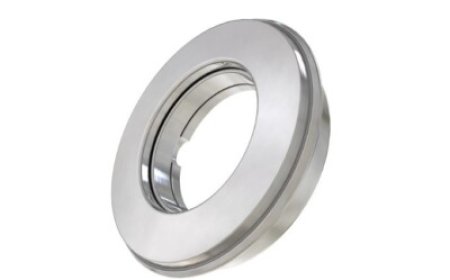Revolutionize Ground Operations: Why a High-Performance Airplane Pre-Conditioning Air Unit is a Game-Changer for Airlines
An airplane pre-conditioning air unit (PCA unit) is a vital ground support system that supplies clean, temperature-controlled air to aircraft parked at the gate or on the apron
An airplane pre-conditioning air unit (PCA unit) is a vital ground support system that supplies clean, temperature-controlled air to aircraft parked at the gate or on the apron. It maintains the cabins comfortable climate without using the aircrafts auxiliary power unit (APU) or engines, saving fuel and reducing emissions.
Airlines, ground handlers, and airport authorities increasingly rely on PCA units to meet sustainability goals, lower operating costs, and enhance passenger comfort on the ground.
Why is an Airplane Pre-Conditioning Air Unit So Important?
? Fuel Savings:
Aircraft engines and APUs consume significant fuel when running on the ground. Using a PCA unit can save hundreds of gallons per turnaround, translating to massive annual savings.
? Environmental Compliance:
Regulatory bodies encourage airlines to minimize carbon emissions. PCA units help airports meet strict CO? and NOx limits.
? Passenger Comfort:
Whether its a scorching summer or freezing winter, a PCA unit keeps the cabin at optimal temperatures, ensuring passengers board and disembark comfortably.
? Reduced Engine/APU Wear:
Minimizing APU and engine usage reduces maintenance costs and extends component life.
How Does a PCA Unit Work?
A typical PCA unit draws ambient air, filters it, cools or heats it as needed, and delivers it through flexible ducts connected to the aircraft.
Key Components:
-
Air Intake Filter: Removes debris and contaminants.
-
Heating/Cooling Coils: Adjusts air temperature.
-
High-Capacity Blower: Pushes conditioned air to the aircraft.
-
Flexible Ducting: Connects the unit to the aircrafts PCA receptacle.
Types of Airplane Pre-Conditioning Air Units
| Type | Description | Typical Use |
|---|---|---|
| Mobile PCA Units | Truck or trailer-mounted, can be moved between gates | Smaller airports or remote stands |
| Fixed PCA Units | Permanently installed at the gate with jet bridge | Busy airports with high passenger volumes |
| Centralized PCA Systems | Supplies multiple gates from a central plant | Major hubs needing efficiency and redundancy |
What to Consider When Choosing a PCA Unit
Before investing, airlines and ground operators should assess:
? Cooling/Heating Capacity:
Ensure the unit meets the demands of different aircraft sizes from regional jets to wide-body aircraft.
? Energy Efficiency:
Modern units feature variable speed drives and high-efficiency compressors to reduce power consumption.
? Climate Conditions:
Airports in hot or cold climates may need higher capacity or advanced dehumidification features.
? Ease of Operation and Maintenance:
Look for user-friendly controls, remote monitoring, and easy access to service points.
? Compliance:
Ensure the unit meets ICAO, FAA, and local environmental standards.
Benefits for Airlines and Airports
Cost Savings:
Airlines can save up to $100$400 per flight turnaround in fuel and maintenance when using PCA units instead of APUs.
Emission Reductions:
PCA units cut CO? and other harmful emissions by thousands of tons annually.
Improved On-Time Performance:
Efficient ground operations help reduce delays related to cabin temperature complaints.
FAQs About Airplane Pre-Conditioning Air Units
? How much fuel does a PCA unit save?
A PCA unit can save 50100 gallons of fuel per hour compared to running the APU.
? Are PCA units mandatory at all airports?
Not everywhere yet, but many major airports require them to meet local environmental policies.
? Can PCA units handle large wide-body aircraft?
Yes. High-capacity units can condition air for aircraft as large as the Airbus A380.
? How is the air quality ensured?
Modern units use multi-stage filtration and humidity control to maintain safe, comfortable cabin air.
? Whats the lifespan of a PCA unit?
With proper maintenance, units can last 1015 years or more.
Best Practices to Maximize Your PCA Investment
?? Regular Maintenance:
Schedule routine inspections to ensure filters, compressors, and ducts are clean and functioning properly.
?? Train Ground Staff:
Proper training reduces operational errors and optimizes energy savings.
?? Monitor Performance:
Use digital monitoring to track usage, temperature settings, and efficiency.
?? Upgrade When Needed:
Older units may be less efficient. Consider upgrades to meet new aircraft requirements and stricter emission rules.
Real-World Data Snapshot
| Metric | With PCA Unit | Without PCA Unit (APU Use) |
|---|---|---|
| Fuel Burn per Hour (Avg.) | 0 gal | 50100 gal |
| CO? Emissions per Turnaround | 050 kg | 200500 kg |
| Noise at Gate | Minimal | Noticeable |
| Passenger Comfort Level | Consistently Maintained | Varies with APU performance |
Expert Insights: The Future of PCA Units
Industry trends show a shift toward centralized PCA systems in mega-hubs, using renewable energy sources to further reduce carbon footprints. Smart controls and IoT integration allow for predictive maintenance and performance optimization, aligning with the aviation industrys push toward net-zero goals.
Quick Takeaways
-
An airplane pre-conditioning air unit is essential for cost-effective, eco-friendly ground operations.
-
It enhances passenger experience while cutting emissions and fuel use.
-
Choosing the right PCA system depends on airport size, climate, aircraft mix, and sustainability goals.
















![Top 9 Real Estate Mobile App Developers in Riyadh, Saudi Arabia [2025 Edition]](https://www.biphoo.uk/uploads/images/202507/image_430x256_6879d0d524335.jpg)


















